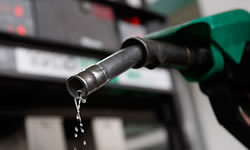Difference between Petrol and Gasoline
Key Difference: Petrol and gasoline are two different terms for the same fuel that is used in an internal combustion engine. Petrol and gasoline are actually the same thing; just different words. These two words have the same meaning, with the only difference being in the places where the words are used. The term ‘petrol’ is used in UK, India and a few other places, while ‘gasoline’ or ‘gas for short’ is used in the United States. That is the only difference between the two terms.

The process of creating petrol includes drilling for crude oil. The oil drilled from the ground is then sent to a refiner. At the refinery, heat is used to separate out different products at boiling points. The oil is then sent through a distillation process where it is applied with heat and pressure causing a chemical reaction. The application of heat and pressure determines if the product becomes petrol or diesel. Following distillation, the fuel is blended with additives that help improve the quality of the fuel. The crude oil is composed of various hydrocarbons that differ in composition. These different hydrocarbons are what make the different products that are derived from the oil. Simple hydrocarbons such as CH4, C2H6, C3H8, and C4H10 are light gases and are used in solvents for paints. The other longer chains of hydrocarbons are used to create fuel.
Petrol, also known as Gasoline, is a transparent fuel derived from crude oil and is used as fuel in internal combustion engines. The term petrol is used to refer to the fuel in UK, India, Republic of Ireland and many other places, while it is known as gas in US and Canada. Petrol is made by distilling crude oil at a certain temperature. Petrol is made from the longer hydrocarbon chains found in crude oil: C5 to C12. The C5 to C12 hydrocarbon chains are liquid at room temperature and are blended to create petrol. Petrol contains a mixture of paraffins, napthenes, aromatics and olefins. Petrol is separated from crude oil from 40°C to 205°C. Gasoline has a high volatile rate, which is controlled by blending it with butane. According to the US Environment Protection Agency (EPA), “Gasoline blends differ, and therefore actual energy content varies according to the season and producer by up to 4% more or less than the average.”
|
|
Petrol |
|
Made from |
Petroleum/ Crude oil |
|
Energy content |
38.6 MJ/liter |
|
Process |
Fractional distillation |
|
CO2 produced per kg |
2.3 kg |
|
Calorific Value (megajoules per kilogram) |
45.8 MJ/kg |
|
Boiling Range |
40°C to 205°C |
|
Torque (for 10L engine) |
1000 Nm @ 2000 rpm |
|
Power (for 10L engine) |
490Hp @ 3500 rpm |
|
Energy by Volume |
33.7 MJ/liter |
|
Best suited for which type of car |
Small, compact cars that has low consumption |
|
Fuel economy |
Lower fuel economy |
|
Purchase Price |
Expensive |
|
Environmental impact |
High levels of CO2 and carbon monoxide (CO); initially low levels of NOx but can increase; high levels of hydrocarbon and does not produce Suspended Particulate Matter |
|
Power |
Runs at higher RPM |
|
Viscosity |
No change |
|
Density |
Ranges between 0.71–0.77 kg/l (6.073 lb/US gal) |
Image Courtesy: guardian.co.uk









Add new comment